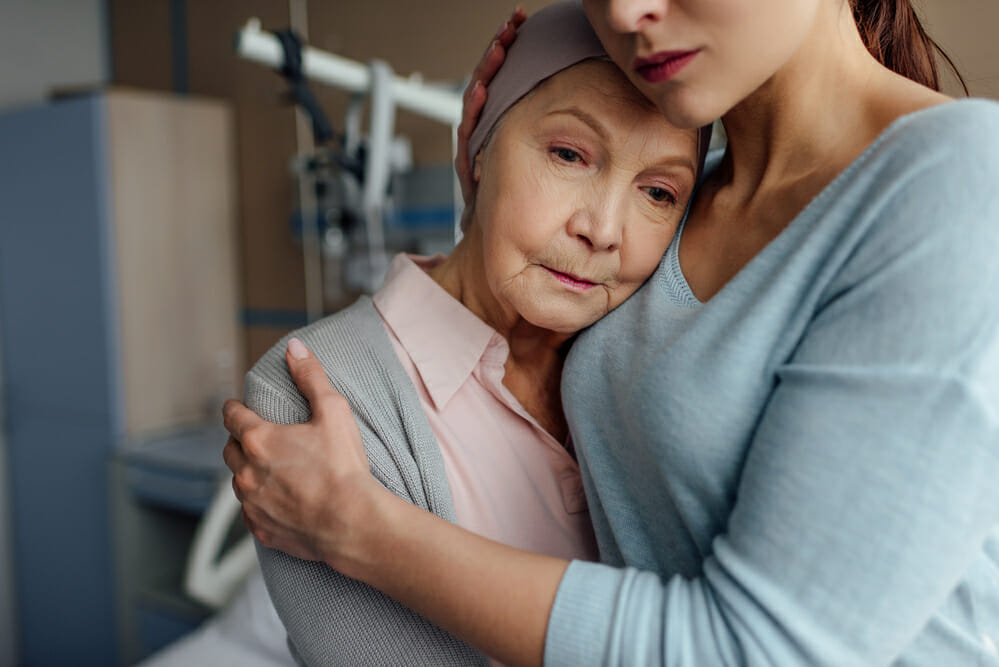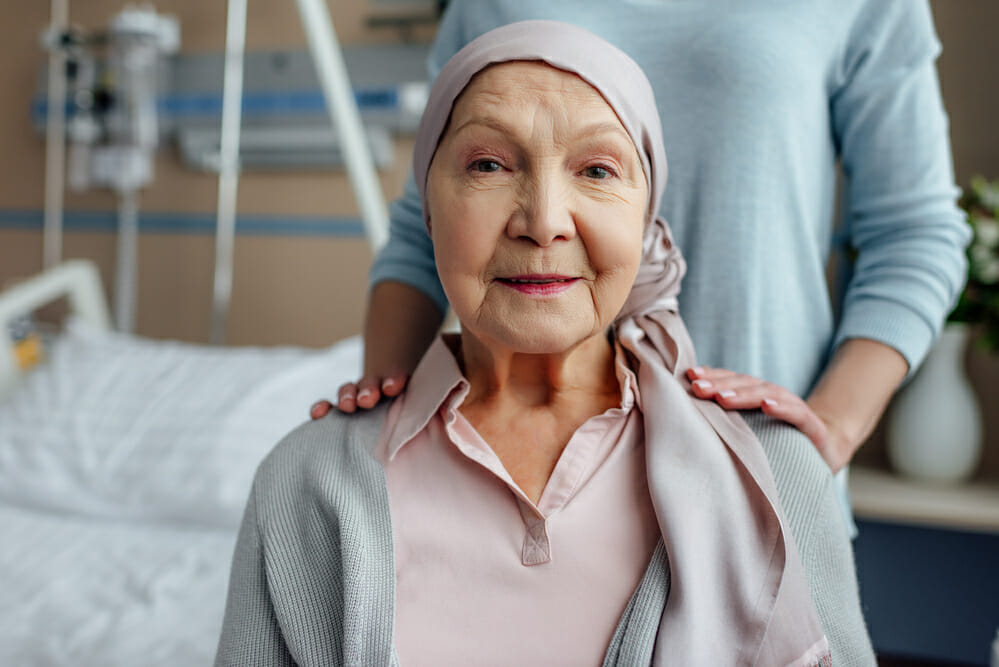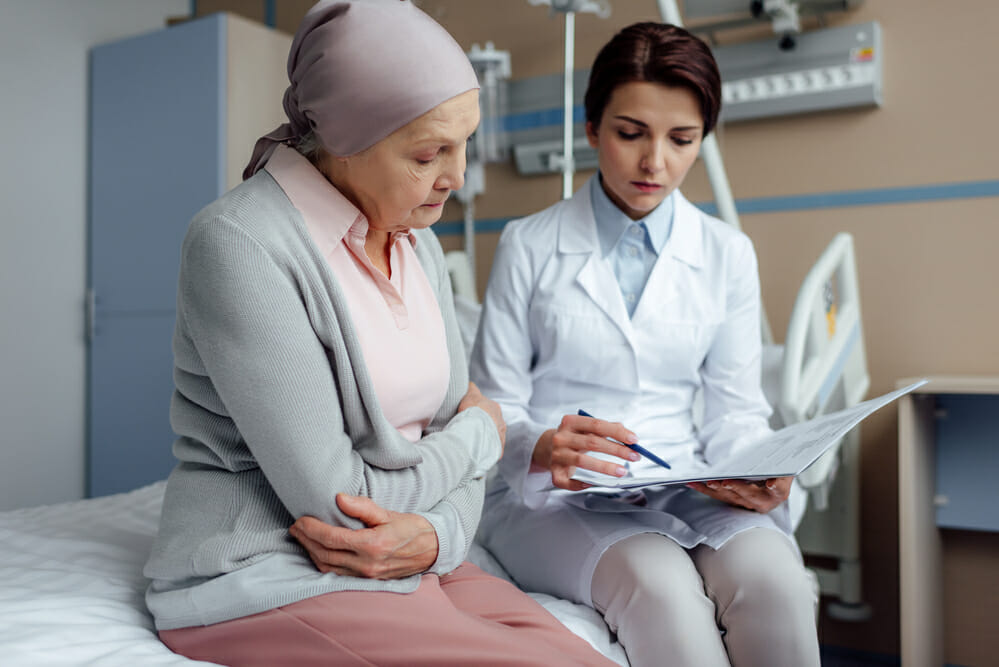
When you know someone close to you who has cancer or is diagnosed with it yourself, conceptions about cancer and compassionate care change. The full scope of what cancer can do to the human body can be learned, but when we experience it first-hand, everything changes.
Cancer is a random thing and still a medical unknown. A health condition you learned about in school, no doubt referencing the link between using tobacco products and smoking cigarettes. Everyone has a baseline idea of what cancer is and how life-threatening it can be.
You quickly start to understand why people take a warrior approach to fighting cancer. It is a battle from the moment you are diagnosed. Some types of cancer can be successfully addressed with different therapies, resulting in long-term and sometimes permanent remission. Other cancer variants are very aggressive and progress quickly.
I had a recent conversation with a family member who is a caregiver. A young 64-year-old aunt who is close to me was diagnosed with terminal cancer in January 2021. Watching her progress and learning about her experiences in end-stage cancer have strengthened my opinion about cancer, cannabis, and compassionate care.
Cannabis has a place in therapeutic care for patients living with cancer. And medical marijuana has a critical role in making patients enjoy symptom relief, including reduced pain, anxiety, depression, muscle spasms, appetite loss, and more.
Very few people progress to stage four without knowing that they have cancer. Sometimes patients are fearful of confirming the diagnosis and may suspect that they have cancer. And they may not report it to a health professional until the symptoms become unmanageable.
Symptoms of cancer may not be noticeable in the earliest phase or stage one cancer. But usually, by the time cancer has progressed to a stage two level, the symptoms are apparent and hard to ignore.
A diagnosis of cancer in stage one is in situ. That means in one place, or cancer that has been detected in one part of the body but has not metastasized (spread to other areas). Cancer detected in stage one is considered very curable.
Treatment usually involves surgery to remove the cancerous tissue or tumor. This can involve postoperative radiation treatments and prescription medications for 1-4 years after the procedure. The location of the tumor is monitored to watch for the return of cancer cells.
In stage two, a tumor has been located, but it has not infected the lymph nodes. It remains in one spot and is referred to as early-stage cancer. In this stage, however, physicians can determine whether the tumor or cancer cells have motility (movement). And a treatment plan is developed to put the cancer cells into remission to stop growth in new areas of the body.

Larger tumors or tissues with cancer have developed. Cancer cells in stage three can be found in the lymph nodes of the body. The lymph nodes are a filtration system within your body. The lymph fluid feeds oxygen and nutrients to all cells in the body. Sometimes that fluid can also carry cancer cells to different parts of the body.
Two types of cancer, Non-Hodgkin Lymphoma, and Hodgkin Lymphoma, actually start in the lymph nodes. And a rare type of cancer called Acute Lymphocytic Leukemia. Lymph node testing of cancer cells can reveal what organ or part of the body cancer originated.
For example, a cancer cell taken from a lymph node near the groin may be a cervical cancer sample. The cancer cells will always reveal the location of the body where the tumor began.
During stage four cancer, there are usually no other medical interventions. If cancer has progressed and physicians are unable to stop it from spreading (metastatic cancer), the focus of care changes. Patients may choose to stop chemotherapy and other treatments, while caregivers focus on reducing the severity of symptoms. And on making the patient comfortable and relaxed through hospice care.
Doctor-supervised cannabis can help patients at each of the four stages of cancer. But it is patients in stage four of their cancer diagnosis that may benefit most from medical marijuana as an alternative medicine approach to symptom management.
As cancer increases in the human body, the symptoms become more pronounced for the patient. At stage zero to stage one, many patients are not aware they have cancer. There are few signs in the beginning. And some of those signs are so subtle they are not even noticed by patients and sometimes physicians.
The most common symptoms patients with cancer experience are:
The diagnosis of cancer can be traumatizing. Cancer touches every aspect of daily life, from health to mood and emotional wellbeing. Some are physical symptoms, while many patients with cancer experience a negative impact on their mental health.

Opioid medications have been in a negative media spotlight for years. The first mentions of an opioid epidemic started around 2012. As states began to migrate to electronic health records (EHRs) and statewide health information exchange (HIE), tracking opioid prescriptions became easier.
Until the federal government-mandated electronic health records, no one had easy access to information about prescription opioid or NSAID medications. Researchers didn’t have any data to back up their observations. That opioid medications were being prescribed at a dangerous frequency to patients.
Another revelation was that patients could be taking more pain medications than prescribed. By visiting more than one clinic or having two or more prescribing physicians. A process called ‘looping’ to exceed the maximum safety number (monthly) of prescribed pain medications.
Many clinical studies have suggested opioid medications can increase nerve sensitivity. Especially when they are used for a long time. With increased nerve sensitivity, a patient may experience even higher levels of pain. Amplified by the effects of prescription opioids.
Some of the most common side effects caused by opioid pain relief medications are:
In the United States, about 30% of adults with chronic pain are over the age of sixty-five (65) years. Chronic pain cases are highest among women, 21.7% of all diagnoses. And non-Hispanic white adults accounted for 23.6% of chronic pain diagnoses in the United States in 2020.
Families who have been caregivers have a term that describes what the end is like. For their loved one, who has suffered debilitating symptoms. And what it is like for themselves, losing someone they love to a disease with no known cure. It’s called “the last mile’.
For some patients with advanced-stage cancer, the battle may have lasted years. Treatments that included radiation therapy, medications, surgeries, and tests. Because of the severity of the symptom’s patients can go through months of difficult side effects. Cancer treatment is difficult, uncomfortable, and filled with health unknowns at every corner.
More time with those you love. In end-stage cancer, that is the priority for the patient. With a terminal diagnosis, spending as much time as possible with family is a normal response. But the patient will also be in declining physical and mental health.
I’ve had the opportunity to talk virtually to hospice patients in the United States and Canada. In each case, the individual had a terminal diagnosis. They were legally using medical cannabis (as part of a treatment plan) to manage cancer and cancer treatments symptoms. Patients diagnosed with advanced cancer may find that cannabis added to a doctor-supervised treatment plan can provide relief.
Cannabinoids can provide several benefits for patients, including but not limited to:
Cancer does a number on healthy digestion. First, the treatments for cancer can include medications and procedures that kill off healthy gut bacteria. When the digestive system is upset, it can be uncomfortable or even painful to eat.
Cannabis has a generic reputation for causing ‘snack attacks’. It is one of the novelties of cannabis culture, understanding that some strains have a high “munchie” factor. While that is something you may want to avoid if you are on a diet, for someone with a suppressed appetite, it helps a lot. That is why Cachexia, or the wasting disease, is a qualifying health condition in virtually every state with a medical cannabis program.
A healthy appetite means a stronger immune system, and weed can help patients restore the need to feed. Cancer can cause rapid weight loss. Certain cannabis strains not only create the desire to eat but they enhance the sensation of eating. Making it enjoyable and sometimes more flavorful.

When pain medications stop working, the patient will report it to their primary care provider (PCP). Suddenly the symptoms that were tolerable or very painful once more. And conventional medical treatments have one solution; they don’t remove pain medications from the equation. They usually look for a higher dose to solve the problem.
As discussed, patients can develop a resistance to opioid medications. That happens after years of use (or abuse) and often with increasing potency or dosage levels. Opioids are not generally designed for long-term use. Not only can opioids stop working, but they can amplify the sensation of pain in the body.
A doctor creating a treatment plan for advanced cancer care can include different potencies and intake methods. And tailor a dosage recommendation based on the patient’s needs.
For example, if the patient was being woken by pain and suffering insomnia, an Indica dominant strain might be suggested. A strain of cannabis that has an analgesic effect for nighttime use. If the patient would prefer being alert, energetic, and feeling happy? To get distressed and emotionally light, a Sativa dominant strain may be suggested for daytime use.
Surrounded by family and friends, patients may not always be forthcoming about their moods. As a patient diagnosed with terminal cancer, there are emotions ranging from sadness and depression to anger to worry about loved ones.
Patients can feel fatigued, frustrated, and fearful about their diagnosis. Even the strongest and most emotionally controlled people can find it hard to moderate their mood. And that is understandable. But negative feelings can also weaken the immune system.
Instead, what patients with a medical card can do, is request a Sativa dominant strain. There are many strains that can provide both pain relief and a natural happy mood lift. Some Sativa strains have a very high energy profile, which may not be a preferred result.
Patients or caregivers should also look at strains that do not have a “giggle” effect or one that amplifies energy or creative focus too much. If a happy (but relaxed) mood is the goal, make sure you discuss that with your dispensary assistant or budtender.
Compassionate care means helping them manage feelings and anxiety through their journey. And to promote relaxation and pain relief.
Patients in advanced-stage cancer can experience muscle spasms and other sharp pains throughout the body. In some cases, when cancer cells have spread to the spinal cord, it can create periodic or chronic nerve pain.
A nighttime blend of cannabis (by tincture or edible if legally available) can help reduce pain to induce a better night of sleep. Some Indica strains with a lower THC potency may also have natural terpenes that enhance sleep. If you vape your medical marijuana, you can also look at adding terpene concentrates to your rig to add more anti-inflammatories.
As cancer advances, it damages the central nervous system. That is the network of nerves and neurons that transmit information between the brain and the body. When the CNS is working properly, the brain sends messages to major muscles. That’s how your muscles move under the command of your brain.
Tumors that start in the muscle are more likely to cause involuntary muscle spasms or pain. That is the case with soft-tissue sarcoma. The tumors can press against major muscles, causing a contraction.
When you are helping care for a loved one with advanced cancer, the mission changes, the time that they have left should be peaceful. Every effort should be made to make sure they feel secure, comfortable, and loved. Many patients also want to stay alert so that they can be with their families. For some, that means finding an alternative to hospice pain medications that make them feel drowsy and numb.
For the patients who want to have less pain but remain present, over 700 strains of cannabis may help. Including combinations of tinctures for daytime use and edibles for longer-lasting nighttime use.
For patients who have been diagnosed with advanced-stage cancer, discounts may be available from a referring physician when you apply for a medical marijuana card.
Individuals receiving social care support like Medicaid, Medicare, or a military veteran may also be entitled to a compassionate care discounted medical card registration fee.
No Information on MarijuanaDoctors.Com should be used to diagnose, treat, prevent or cure any disease or condition. You can view our Full Disclaimer here.